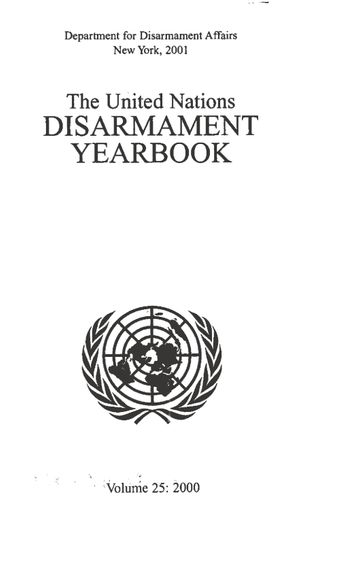Biological and chemical weapons

- Author: United Nations Office for Disarmament Affairs
- Main Title: United Nations Disarmament Yearbook 2000 , pp 75-94
- Publication Date: May 2001
- DOI: https://doi.org/10.18356/a6743db0-en
- Language: English
Curbing the proliferation of two distinct categories of weapons of mass destruction, namely chemical and biological weapons, and prohibiting their use have been preoccupations of the international community since the founding of the United Nations. Thus far, international efforts have resulted in the conclusion of the Biological Weapons Convention (BWC), the first multilateral disarmament treaty banning an entire category of weapons of mass destruction, and the Chemical Weapons Convention (CWC), the first such treaty to be negotiated completely within a multilateral forum, the Conference on Disarmament (CD). Ever since these two multilateral agreements were opened for signature in 1972 and 1993, respectively, the United Nations has sought to promote universal participation in them and compliance with their provisions as well as to prevent the proliferation of biological and chemical weapons to non-party States. In addition, Member States have continuously reaffirmed the necessity of upholding the principles and objectives of the 1925 Geneva Protocol for the Prohibition of the Use in War of Asphyxiating, Poisonous or Other Gases, and of Bacteriological Methods of Warfare.
© United Nations
ISBN (PDF):
9789210580175
Book DOI:
https://doi.org/10.18356/1da5389e-en
Related Subject(s):
Disarmament
Sustainable Development Goals:
-
From This Site
/content/books/9789210580175c004dcterms_title,dcterms_subject,pub_keyword-contentType:Journal -contentType:Contributor -contentType:Concept -contentType:Institution105
/content/books/9789210580175c004
dcterms_title,dcterms_subject,pub_keyword
-contentType:Journal -contentType:Contributor -contentType:Concept -contentType:Institution
10
5

